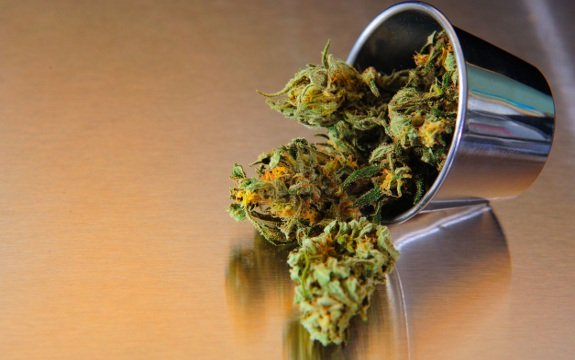Are we Ready for “Pharmaceutical Strength Marijuana?”

 As a growing number of states push to legalize even recreational marijuana, the medical field looks to expand and legitimize medicinal use of cannabis compounds. These compounds, cannabinoids like Cannabidiol (CBD), have little to no psychoactive effects and a whole host of health perks. From treating cancer to addiction, cannabis compounds have the ability and the potential to change the world of health care. Are you ready for this future of legal cancer treatment?
As a growing number of states push to legalize even recreational marijuana, the medical field looks to expand and legitimize medicinal use of cannabis compounds. These compounds, cannabinoids like Cannabidiol (CBD), have little to no psychoactive effects and a whole host of health perks. From treating cancer to addiction, cannabis compounds have the ability and the potential to change the world of health care. Are you ready for this future of legal cancer treatment?
As Dr. Sircus of the International Medical Veritas Association points out, the American College of Physicians—the second largest group of medical doctors in the US—has even urged the US government to stop waging war on marijuana.
“ACP encourages the use of non-smoked forms of THC (the main psychoactive element in marijuana) that have proven therapeutic value,” they wrote in a lengthy paper on supporting research several years ago. The ACP cites marijuana’s use in treating weight loss from diseases such as AIDS and combating nausea associated with chemotherapy treatments. Their recognition that the plant has medicinal value leads them to urge the feds to drop their classification of marijuana as a Schedule I substance.
But more than the ACP’s recognition that cannabis could have potentially beneficial effects on chemotherapy patients, cannabis may even be able to replace toxic treatments like chemotherapy and radiation.
As a 2007 Harvard Medical School study found, active cannabinoids are able to cut lung tumor growth in half and can significantly hinder lung cancer’s ability to spread. Further, researchers published in Cancer Research found that marijuana components could stop the spread of human brain cancer. Numerous other studies have affirmed what these two have found—that cannabis may hold the key to more effective cancer treatments and possibly even a ‘cure.’
Incredible Healing: Woman Uses Marijuana to Overcome Lyme Disease
Perhaps as impressive as cannabis’s ability to stop the spread of cancer, is its ability to damper pain. Despite what some critics would have you think, this isn’t because you are high and in an altered state, but because cannabidiol has extremely powerful anti-inflammatory properties.
Dr. Allan Frankel explains:
“CBD works against pain primarily in the peripheral nervous system. It does not work like typical pain meds by affecting the central nervous system; it works at the neuro-synapse. When we sustain injuries, often the pain is acute and disappears completely. Other times we have persistent or intermittent pain, but it is still not that big of a deal. However, with many disorders the pain is either part of the underlying problem itself (multiple sclerosis, rheumatoid arthritis, etc.) or the pain becomes a syndrome of its own. In other words, the pain takes on a life of its own and is now crippling the patient.”
Add to these benefits the potential that marijuana could help combat addiction to real drugs and we have only the beginnings of a medical revolution. That is, if we’re ready for it.

ill be getting mine organically
One reputable, and a few wild card, company has a CBD product available across state lines but there is a big question as to the dose/price efficacy, especially for longterm conditions.
Additionally, some employer tests may ding you for taking it depending on the method of analysis used–despite the fact that there is no detectable psychoactive constituents.
The science seems to piling up that CBD, and maybe a host of other lesser constituents, are promising for a list of conditions.
In my recent experience, they can add that pot is good for helping with what is known as phantom pain.